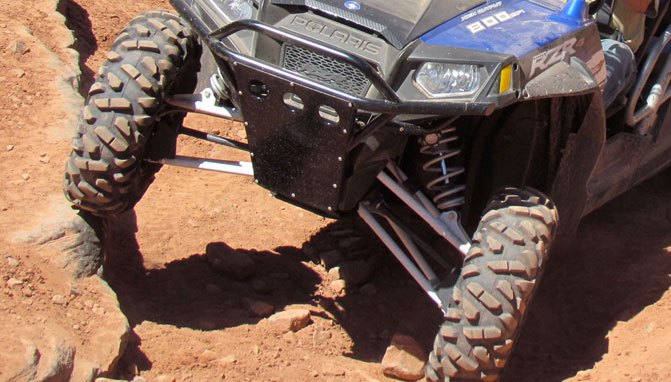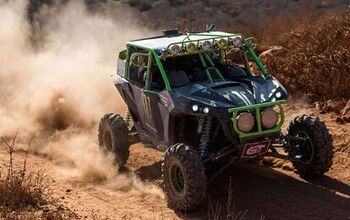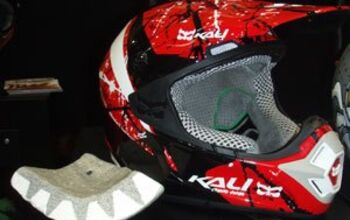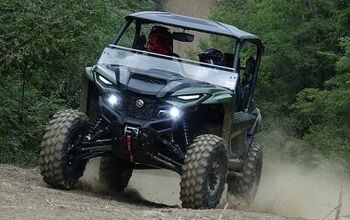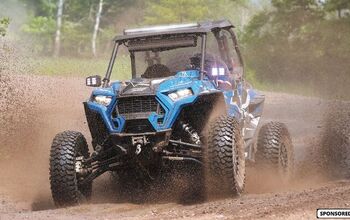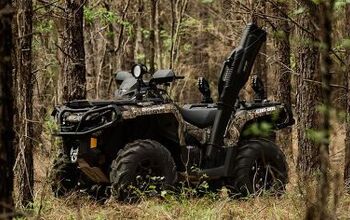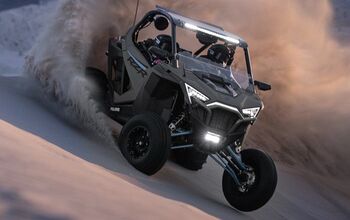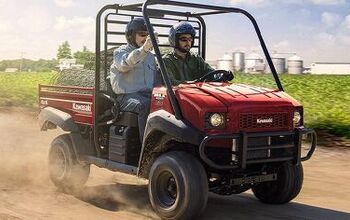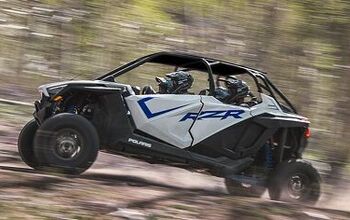Rock Crawling Tips and Tricks
A couple of months ago I attended the 2013 Rally on the Rocks in Moab, Utah. An event like this is great for a myriad of reasons, one of which is the opportunity for newbies (like me) to try their hand at rock crawling in a safe, controlled environment.
While I don’t consider myself a total rookie, on my first trip to Moab, back in 2011, I had virtually no Side-by-Side experience whatsoever. Sure, I’ve ridden ATV’s all my life and I’ve raced and done freestyle in the past, but my initial climb up the first Lion’s Back on Hell’s Revenge gave me a whole new respect for these vehicles and the terrain we try and conquer. By the end of the week I was tearing down the trail and climbing up slick rock like a boss, but it took some slow and easy steps, along with the helpful coaching of some of the trail guides, to help me get comfortable in the driver’s seat.
Rock crawling is a game of inches, but it’s easy to get started.
This year, I felt much more at ease and while I’m not a seasoned pro, I’ve learned a lot from friends that are and I thought it might be helpful to share some of those tips with other would-be rock crawlers. Remember, you don’t have to have the ultimate rock crawling setup to go out and play around on some obstacles. Most of today’s production Side-by-Sides do the job and give you a taste of this exciting style of off-roading.
Easy Does It
I’ve mentioned before that rock crawling is a different kind of thrill. Most people assimilate a thrilling experience with speed. In rock crawling it’s not at all uncommon to creep along at just one or two mph, but the thrill can be just as exciting. Throttle control is imperative in rock crawling as too much gas can cause you to miss your marks or land you on your lid in a hurry. Momentum is your friend, but that doesn’t mean carrying speed into an obstacle is the best way through it.
When you are dealing with obstacles like this, slow and steady is the smart play.
Every obstacle or rock field is different, but it’s important to roll up to each obstacle with smooth and steady throttle control. It is possible to climb up a nearly vertical ledge, but rather than driving into the ledge, roll up to it slowly allowing the tires to make contact with both the bottom and face of the ledge. As the UTV begins to climb, you can gradually increase your speed and carry momentum forward to help pull the rear of the vehicle up and over the ledge. Keep in mind that too much speed can cause the rear tires or the under carriage to slam into the face of the ledge.
VIEW: 2013 Rally on the Rocks Report
Momentum will be more important in a rock field or an obstacle with large rocks of varying heights. It is very easy to get hung up or high centered on those obstacles, so keeping a steady pace will help you to glide over any rocks that might happen to make contact with the body of the Side-by-Side.
Keeping a steady pace when crawling over a nasty rock bed will help keep you from getting high centered.
I know in Drivers Ed they told you don’t ever drive with two feet, but in this instance, it’s encouraged. There should be no gap between the throttle and the brake if for some reason you have to let off. I’ve seen it several times when someone is losing power or the front end starts to come up on a steep obstacle. Their first instinct is brake hard but if they let off the gas and start to roll backwards before mashing the break, it’s very easy to end up upside down.
Using both feet also helps to avoid tires slippage. A spinning tire is dangerous to a rock crawler because it can move in any direction, including sideways. When going over rocks, you want as much surface area of the tire as possible in contact with the rock at all times. In a place like Moab the rocks can easily get coated with a layer of sand or dust, which can make getting traction difficult. Even then, avoid the temptation to punch the throttle. Too much right foot can get you squirly and that’s when things break.
Knowing how to properly modulate your gas and brake pedals will help keep you on all four wheels.
Stick to the High Ground
It might go without saying but if one spot of the trail is significantly higher than the rest, you don’t want to straddle it. Keeping your tires on the high spots will allow you to drive over the rocks, keeping them between the tires rather than under the body. That’s not to say you won’t scrape your undercarriage from time to time, in fact, it’s pretty much a guarantee. But surveying the trail ahead, especially if it’s well trafficked, will give you an idea of where you need to place your tires. Scuff or scrape marks mean someone drug their belly pan and black marks likely mean they spun their tires. If it’s not obvious, these signs will show you where the high spots are to keep you from getting high centered. Again, smooth and steady throttle control is the most important, even if you happen to drag across a rock, the slight momentum will help you keep moving forward.
Keep your tires on the high spots to avoid tipping over.
One thing I really like about Rally on the Rocks is there are experienced guides that will spot for you and literally tell you where to place your tires. It’s always good to take a mental picture of the trail ahead so you know exactly what’s passing under your vehicle, but having that extra set of eyes is incredibly helpful.
VIEW: How To Build a Rock Crawler
A couple inches one way or the other can be the difference between success and failure and it’s amazing how well these guides know the terrain and can tell you exactly where you need to place your tires.
Spotters are a huge help, especially for newer riders. Listen to what they tell you and you’ll make it up and over.
Go Prepared
Even if you’re not interested in getting too crazy on the trail, there are a few things that can give you a little extra peace of mind. For one, you want to make sure that both the driver and passenger remain in the vehicle at all times. Having adequate handholds as well as aluminum doors to keep all of your extremities inside in the event of a rollover is very important.
VIEW: Building a Serious Mud Machine
If you want a little extra insurance before tackling a steeper obstacle, bring along a lead rope. These are primarily used on steep obstacles where there is a greater risk of tipping. When tied to the bumper or even the roll cage, a lead rope will help decrease the chance of going over. I’ve even seen them used to provide an extra pivot point when tied to the side of the roll cage.
Having adequate handholds for driver and passenger is a must.
Experienced rock crawlers would tell you there’s not much to it. It’s mostly about technique and finesse. Driving carefully and under complete control at all times, knowing exactly where the tires are in contact and applying just the right amount of throttle to get you up or down an obstacle is the name of the game. All of that comes with time, but you don’t have to be a pro to go out and attend an event like Rally on the Rocks. Taking small steps and building your confidence, as well as learning how to read terrain and know how the Side-by-Side will react comes with time and practice. The only way to get better is to get out there and do it, so why not use that as an excuse to go out on the trail and play?
Growing up in Oregon, most of Seth's involvement in the powersports world was limited to what he saw in magazines and videos. Following a brief stint in the corporate world, Seth took a flying leap (literally) and moved to California to pursue a career in freestyle motocross. Though short lived, the opportunity immersed him in the industry and is now a well-established off-road writer.
More by Seth Fargher



